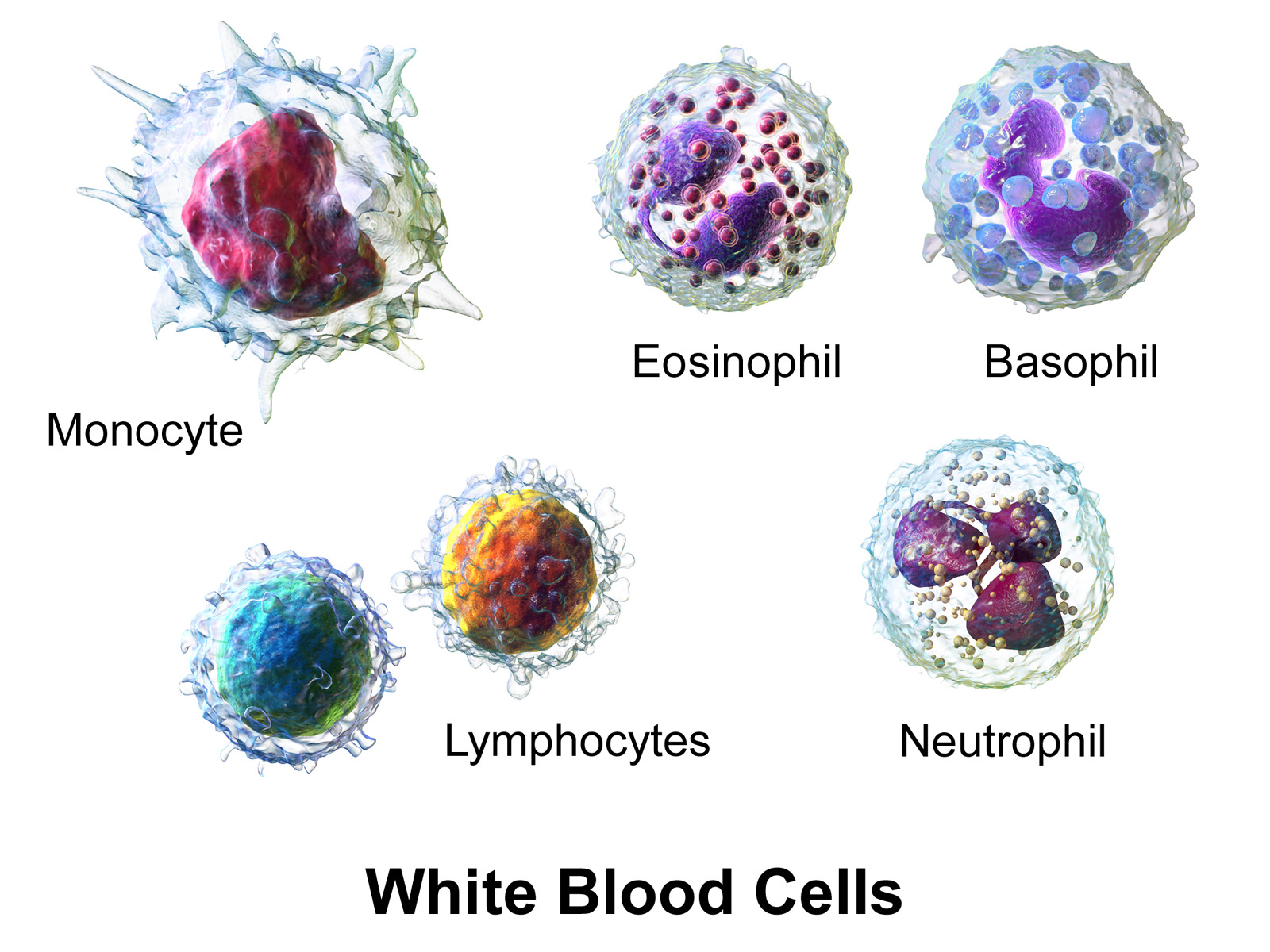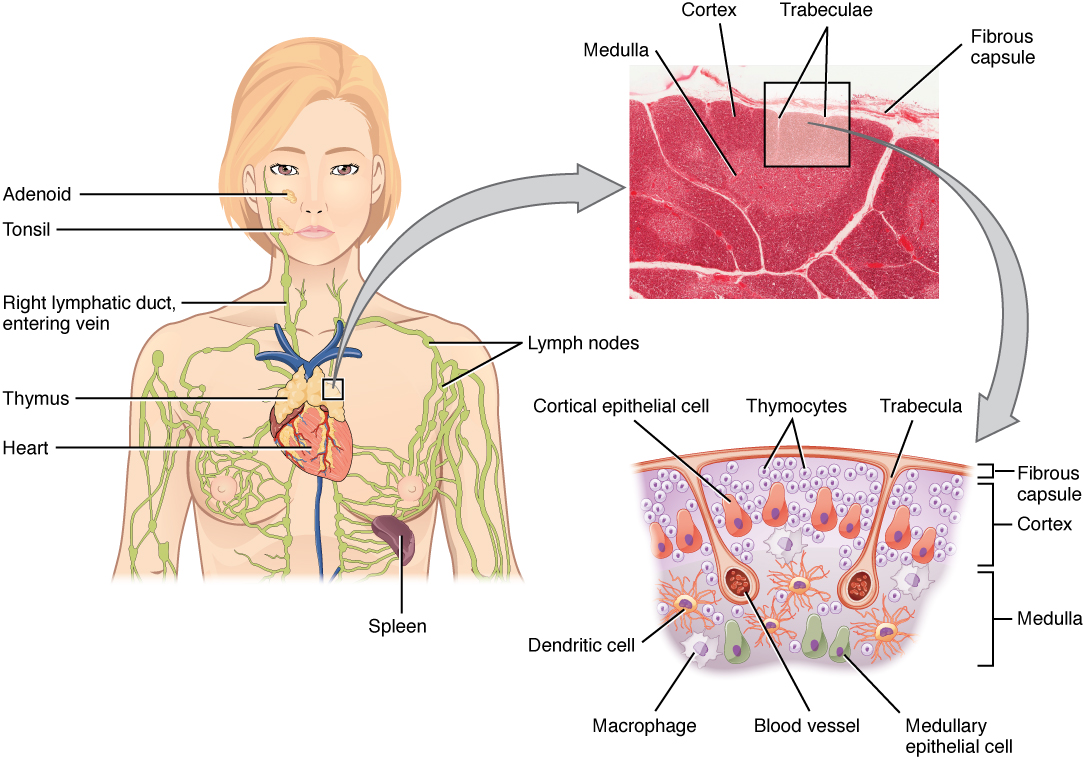Playlist
Show Playlist
Hide Playlist
Migration and Maturation of Interdigitating Dendritic Cells and T-Cell Differentiation – Lymphocyte Activation
-
Slides Lymphocyte Activation.pdf
-
Download Lecture Overview
00:01 In order to initiate a immune response, for the adaptive T-cells and the adaptive B-cells, you need these organized structures that we’ve already referred to - the secondary lymphoid tissues. 00:19 And looking now at a lymph node, with some lymphocytes sitting in the lymph node, those lymphocytes need to become activated. 00:29 So they need to encounter antigen. 00:32 And one of the cells that is crucially important in activating naïve T-cells, T-cells that have not previously encountered the antigen, is the dendritic cell. 00:44 So these dendritic cells will arise from hematopoietic stem cells in the bone marrow. 00:52 And the precursors of these dendritic cells will arrive in the tissues. 00:55 Having come from the bone marrow they will arrive in the tissues from the blood circulation. 01:01 And they sit in the tissues throughout the body and they just wait there. 01:09 They just sit there waiting in case antigen comes along. 01:10 And if they encounter antigen using their Pattern Recognition Receptors, they detect PAMPs associated with pathogens. 01:18 They can take up the antigens because at this stage in their development, whilst they’re sitting in the tissues, they are phagocytic. And they’re in an antigen uptake mode. 01:31 Recognition of the antigen activates these dendritic cells and changes their mode of operating. 01:40 First of all, it tells them to move out of the tissues and go to the local lymph node. 01:48 And they do this. 01:50 So following antigen uptake, they migrate via the afferent lymphatics and into the lymph node. 02:02 As they migrate through the afferent lymphatics, they lose the ability to become phagocytic, or to phagocytose microorganisms. 02:07 But importantly, they upregulate the expression of MHC molecules and of co-stimulatory molecules, particularly the B7 molecules. 02:18 So they now switch from being in an antigen uptake mode to an antigen presentation mode. 02:26 And they present antigen to the T-cells, thereby activating the T-cells. 02:31 And those activated T-cells can now leave the lymph node via the efferent lymphatics and go and do their job throughout the body. 02:42 So the activation of naïve T-cells requires… there’s an absolute requirement for dendritic cells. 02:51 So using their Pattern Recognition Receptors, these dendritic cells which are present in the tissues at that stage are phagocytic. 03:00 And ultimately following activation can process the antigen and deliver it to the T-cell, following their migration through the afferent lymphatic vessels. 03:15 And as we’ve already heard, MHC molecules, particularly MHC Class II become highly increased in their level on the surface of the dendritic cell. 03:25 And likewise the B7 co-stimulatory molecules - B7.1 which is CD80 and B7.2 which is CD86, also are greatly increased in concentration to facilitate antigen presentation to the T-cells. So these antigen presenting mode dendritic cells are present in the lymphoid tissues. They’re not phagocytic, they don’t need to be phagocytic anymore because they’ve already taken up the antigen. But they have the necessary molecules on their cell surface for antigen presentation and T-cell activation. Just like B-cells become clonally selected, so the T-cells become clonally selected, because you have the same situation. 04:06 You have a genetic recombination mechanism for the T-cell receptors, just like the genetic recombination mechanism for the B-cell receptors can create millions and millions of different T-cell receptors. 04:19 So for each individual specificity, you don’t have enough T-cells to get rid of the infection. 04:24 You maybe only have a few thousand. 04:26 You need to expand them up in number, exactly like we saw for the B-cells. 04:32 So here we have a dendritic cell, it’s taken up antigen, it’s processed it, it’s presenting it to the T-cell. 04:37 And this particular T-cell in the middle with the black T-cell receptor is recognizing this particular peptide MHC combination. 04:45 So this T-cell will become clonally selected, proliferation will be induced. 04:51 It will expand up in number so that ultimately we have enough of those particular T-cells to deal with the infection that’s present at that time in the body. 05:01 As well as proliferation, just like we saw for the B-cells, the T-cells also undergo differentiation. 05:07 So a naïve T-cell becoming activated by MHC peptide, seen here sitting on the end of a dendritic cell process, it becomes ac-- the T-cell becomes activated, it proliferates, expands up in number and then it will differentiate not only into the cells that are needed at that point in time, which we’re going to refer to as effector T-cells. 05:29 So this might be a helper T-cell secreting cytokines, it might be a cytotoxic T-cell that’s going to kill an infected cell. 05:36 But as well as most of those cells becoming effector T-cells, some of them will become memory cells so that we can generate a superior secondary immune response upon a subsequent encounter with the same antigen.
About the Lecture
The lecture Migration and Maturation of Interdigitating Dendritic Cells and T-Cell Differentiation – Lymphocyte Activation by Peter Delves, PhD is from the course Adaptive Immune System. It contains the following chapters:
- Migration and Maturation of Interdigitating Dendritic Cells (IDCs)
- Activation of Naive T-Cell
- Clonal Selection of T-Cells
- T-Cell Differentiation
Included Quiz Questions
Which statement best describes dendritic cells in the lymph node?
- They express coreceptors such as cluster of differentiation 80 (CD80) along with major histocompatibility complex molecules.
- They are highly phagocytic.
- They originate from the cortex of the lymph node.
- They enter the lymph node via the efferent lymphatic vessels.
- They present antigens to B cells.
Which of the following statements accurately describes dendritic cells?
- Once activated, they become antigen-presenting cells.
- They are present in secondary lymphoid tissues as naive, unactivated phagocytic cells.
- The cluster of differentiation molecules on the cell surface bind to major histocompatibility complex molecules on the surface of T cells.
- They present antigens to B cells in the blood.
- They mature in the thymus.
Where do dendritic cells mainly present fragments of the pathogen to T cells?
- Lymph node
- Thymus
- Blood
- Bone marrow
- Liver
Which types of major histocompatibility complex (MHC) and cluster of differentiation molecules are mainly found on the surface of a fully mature antigen presenting dendritic cell?
- MHC Class II, CD80, CD86
- MHC Class II, CD3, CD5
- MHC Class I, CD 80, CD86
- MHC Class I, CD3, CD5
- MHC Class II, CD4, CD8
Which of the following is not a type of T cell?
- Antibody-secreting T cells
- Cytotoxic T cells
- Memory T cells
- Helper T cells
- Regulatory T cells
Customer reviews
5,0 of 5 stars
| 5 Stars |
|
5 |
| 4 Stars |
|
0 |
| 3 Stars |
|
0 |
| 2 Stars |
|
0 |
| 1 Star |
|
0 |






